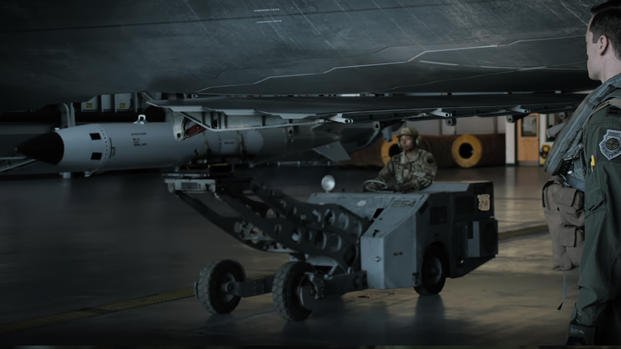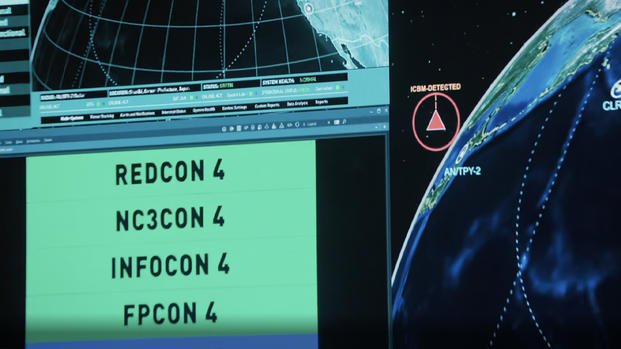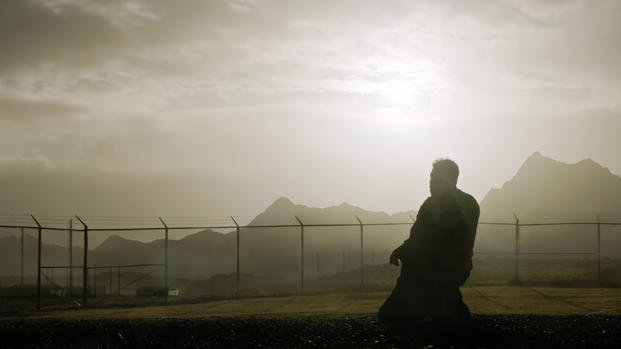The Pentagon is not pleased with how its missile defense systems are portrayed in A House of Dynamite, the Hurt Locker filmmaker Kathryn Bigelow’s chilling new nuclear thriller now streaming on Netflix.
In a memo dated October 16 and obtained by Deadline, the Department of Defense took aim at a central plot point in the film, calling it misleading and “based on false assumptions.” Officials say one of the film’s major plot points, an enemy missile heading to wipe out the almost 10 million residents of greater Chicago, and how the military's missile defense system is depicted, are not realistic. The Government agency is pushing back on the notion that the U.S. military would fail to intercept an incoming nuclear missile. This catastrophic failure is what drives much of the film’s tension.
The memo doesn’t accuse the filmmakers of getting all the details wrong, but does insist that, when it comes to missile defense reliability, reality paints a far more optimistic picture than Bigelow’s bleak scenario. A well-positioned military official told the outlet:
“The numbers tell us what is occurring, and we need to know… The results are very, very good, with the program scheduled to grow over the next decade..."
He added of the interceptors, which the U.S. has developed in the post-Star Wars era and will deploy down the line. That may be, but it’s not what audiences are seeing on screen.

The Movie’s Drama vs. The Pentagon’s Data
In A House of Dynamite, the United States scrambles to shoot down a nuclear warhead streaking toward the Midwest. According to the film, Ground-Based Interceptors (GBIs) launched from Alaska have only a 61% success rate, and when it matters most, they fail — and then the clock begins to tick. The White House (led by Idris Elba) weighs the unthinkable, whether to strike back or stand down.
The film suggests the world’s most advanced military may not be able to stop a single inbound nuke. That’s where the Pentagon draws the line.
In contrast, the DoD’s Missile Defense Agency claims a perfect record — 100% accuracy — over a decade of testing its hit-to-kill tech. Their position is that while House may make for compelling cinema, it isn’t grounded in the real-world capabilities of the U.S. missile shield.

Screenwriter Responds To The Pentagon’s Push Back
Noah Oppenheim, the film’s screenwriter and a former NBC News exec, isn’t backing down. Speaking to MSNBC over the weekend, he politely pushed back on the Pentagon’s view:
“Respectfully disagree,” Oppenheim said. “I welcome the conversation. I’m so glad the Pentagon watched, or is watching, and is paying attention to it, because this is exactly the conversation we want to have.”
Oppenheim also clarified that while A House of Dynamite had multiple tech consultants with Pentagon experience, none were from the current administration.
And Bigelow? She made a deliberate choice to keep the Department of Defense at arm’s length. According to her and Oppenheim, independence was key, and so was asking hard questions. Speaking to the outlet in their cover story:
“... watching movies like On the Beach, Dr. Strangelove, Fail Safe… there’s such a rich component of films that have then trailed off. And I feel like nuclear weapons, the prospect of their use, has become normalized. We don’t think about it, we don’t talk about it. And it’s an unthinkable situation. So, my hope was to maybe move it to the forefront of our lives.”
Mission accomplished, but not without a bit of controversy.

What’s the Real Interceptor Score?
Now to the crux of the dispute: numbers.
The Pentagon says their interceptors — essentially trying to hit a bullet with another bullet in space — are batting 1.000. The film says 61% — a number backed by critics of the missile defense program who argue that the real-world success rate in combat-like conditions is far lower.
What’s actually true? That depends on what you count as a “test” and what you define as “success.”
The DoD’s reported 100% accuracy rate refers to controlled testing environments over the past few years. Critics argue that their test conditions don’t replicate the chaos of a real attack. Some missile defense experts claim the real-world intercept rate might land closer to what Bigelow and Oppenheim show on screen.

Reality Check: The Nukes Are Still Out There
Whether you believe the Pentagon’s perfect record or the film’s grim assessment, one fact is indisputable: nuclear weapons haven’t gone anywhere. And most recently, President Trump has even hinted at beginning Nuclear testing, the first time in over thirty years.
There are approximately 12,300 nukes still in existence globally, split among nine nations. The U.S. and Russia hold the vast majority. That’s enough firepower to end civilization several times over. Currently, the U.S. has 44 operational interceptors based in Alaska and California, with plans to deploy a next-gen system starting in 2028. That includes nearly 50 improved interceptors meant to boost reliability and speed.
House of Dynamite doesn’t argue that those systems don’t exist. It simply raises the question: what happens if they fail? And what happens after?

Fallout or Fiction?
This isn’t the first time the Pentagon and Hollywood have butted heads. The military often provides support to filmmakers, as long as the script is approved. When they don’t give the moviemakers the okay, productions have to go it alone and make the movie without the support of the official government assets. That’s what Bigelow did here.
Even without the DoD’s blessing, A House of Dynamite has struck a nerve — and maybe that was the point. Kathryn Bigelow isn’t new to this terrain. She’s tackled war, torture, and counterterrorism with brutal realism. With House, she’s not just making a movie, but issuing a warning.
Controversy hasn't slowed the movie's reach, and it's clearly finding its audiences. As of this writing, A House of Dynamite is in the #1 spot in Netflix's Top 10 of all streaming movies.
















